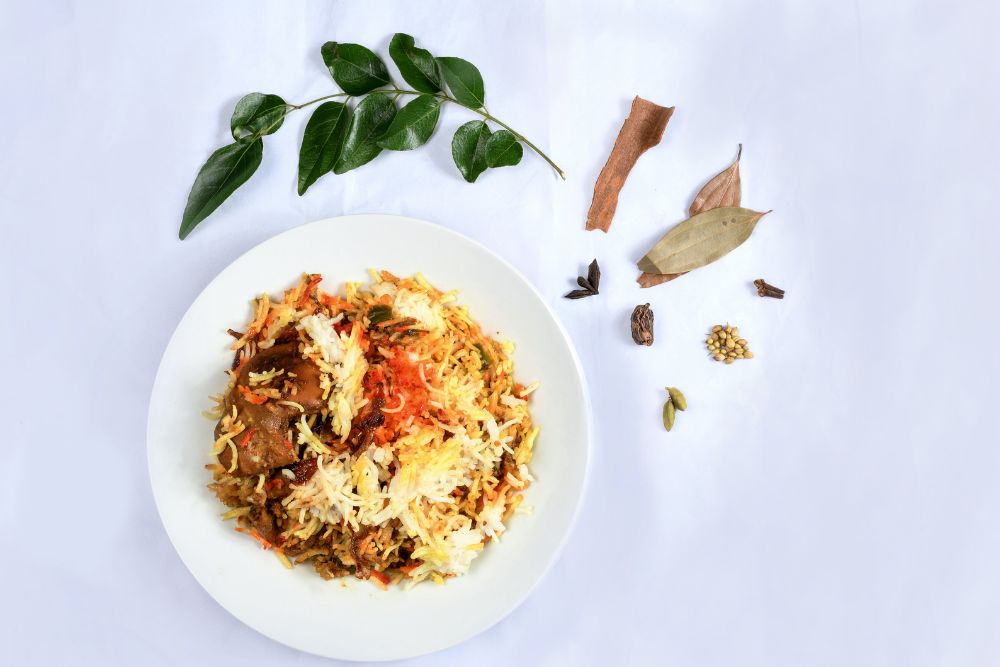Venturing into Indian Cuisine
Contributions by Madison Service, 2019 Bastyr University Dietetic Intern
Updated July 19, 2021
Curries, tandoori, tikka masala, and more!
Indian food is a popular cuisine, packed full of flavor and chock-full of nutrients. Many people seek out this flavorful cuisine for the aromatic spices and curries.
If you’ve never tried Indian food before, adventuring out of one’s comfort zone and stepping into a new food culture is exciting but could create unease if you’re trying to avoid gluten. Fortunately, most Indian food is naturally gluten-free, as major staples include rice, veggies, and meats and features beans and legumes like chickpeas and lentils.
Indian food dishes vary from region to region. Restaurants in the United States tend to emphasize either North India or South India cuisine, with a majority leaning towards the northern region influence. While the list below hardly scratches the surface of the intricacies of Indian cuisine, it highlights the key differences between the regions.
North India Cuisine
The following foods and dishes are traditionally associated with North India, a region that consists of eight of India’s 29 states and includes the major cities Delhi and Jaipur. The region is vast, and the climate is temperate and varied, ranging from cool or cold in the winter and hot or wet in the summer. Food in this region tends to feature meat and grains with heavy sauces.
- Meat-based dishes
- Staple crop: Wheat
- Wheat-based breads:
- Naan
- Roti
- Dairy products
- Tandoori (dishes baked in a round clay oven, often with chicken)
- Paleek paneer (spinach and cheese)
- Aloo ghobi (potato and cauliflower)
- Garam masala spice
- Yogurt, onion, tomatoes, and garlic
- Chai tea
South India Cuisine
This region consists of five Indian states and two union territories. The tropical climate lends itself to the food in this region, which features vegetables and seafood dishes with more spice heat than North India dishes. Bread products from this region are more commonly made from lentils and/or rice.
- Vegetarian or fish-based dishes
- Staple crop: Rice
- Gluten-free breads:
- Dosa (lentil and rice crepe)
- Idli (steamed lentil rice cake)
- Spicier foods
- Coconut, native fruits, and curry leaves
- Tamarind
- Chicory coffee

Indian Cuisine Basics
Indian food is often served family-style, fostering a sense of community with the meal ritual. Many restaurants encourage ordering a variety of dishes and sharing with those around the table. If you decide to sample multiple dishes, make sure everything at the table is gluten-free. Enjoying your own entree is fine as well.
Indian meals generally include these basic components:
Basmati rice: A great gluten-free foundation for your meal. Basmati rice acts as a buffer to the spicy main dish and helps cool the palate. If available, opt for the brown rice version for a boost in fiber and nutrients.
Proteins: Lamb, chicken, and goat are the most common meats used in Indian dishes, due to a variety of religious dietary restrictions in India. Lentils are commonly used as well. Choose lentils that are certified or labeled gluten-free to avoid the risk of cross-contact with gluten. Gluten-free lentils may be less available when eating out.
Vegetables: Some common vegetables include broccoli, carrots, cabbage, zucchini, spinach, onion, and garlic.
Ghee: Clarified butter made by simmering butter over low heat to remove the water content and straining to remove milk solids. Used as cooking fat.
Chutney: A popular type of relish made from fruits, herbs, chilies, and spices.
These are popular Indian food options that you may see at a restaurant or dishes you may decide to make at home:
Tandoori Chicken: Refers to whole chicken or large chicken pieces traditionally cooked in a tandoor, a high-temperature, round clay oven. You can make tandoori in your own oven using a variety of spices specific to this dish, namely coriander, cumin, garlic powder, ginger, cloves, mace, fenugreek, cinnamon, black pepper, cardamom, and nutmeg. You can also purchase a tandoori spice blend for convenience.
Chicken Tikka: Translates to “bits of chicken” so tends to be smaller pieces of chicken on skewers, traditionally marinated and cooked in a tandoor. Chicken tikka masala is a spicier variation of this dish as it contains more masala spice.
Biryani: This is a Basmati rice staple that is similar to Chinese fried rice. The rice is seasoned with Indian spices and could contain meat, eggs, or vegetables such as carrots, onions, and peas. Can be enjoyed as a main meal or in a smaller portion as a side dish.
Raita: A creamy condiment made with Indian curd yogurt called dahi that is a delicious cooling counterpart to spicier Indian dishes. Can be made with plain yogurt and lightly seasoned with spices like coriander, cumin, and cilantro.
Masala: A Hindu word meaning a “mixture of spices” that can be up for interpretation by the chef. Garam masala is a particular blend of spices with heat such as black pepper, cardamom, cinnamon, cloves, cumin, mace, and nutmeg.
Curries: A varied mixture of spices with meat and vegetables or vegetables alone, usually served with rice. Curry spices could include cumin, coriander, ginger, and turmeric plus fresh or dried chilies. In South India, curry leaves are sometimes added.
Paneer: A firm, curdled milk cheese, similar to ricotta or cottage cheese, has a strong flavor and is cut into cubes.

Indian Restaurants & Gluten-Free Eating
Some Indian restaurants carry their own specific gluten-free menu or items labeled gluten-free on their regular menu. If you do not see anything labeled gluten-free, do not assume they don’t have any options as many Indian dishes are inherently gluten-free. Remember to ask about possible cross-contact risks during the preparation of your dish. Check out our article, Restaurant Dining: 7 Tips for Staying Gluten-Free, for more information about safely eating out.
Watch out for these gluten-containing ingredients that may sneak their way into an Indian food dish:
Spices: Pure spices – whether Indian or otherwise – are naturally gluten-free. A potent spice called hing, however, is often processed with wheat and could be used in chutneys, soups, and sauces. Make sure to let your waiter know about your gluten-free needs to avoid accidentally eating something that is not gluten-free.
Suji or Rava: Semolina (wheat)-based and often used as a batter for Indian dishes such as Upma and Rawa Ladoo.
Maida: Refined wheat flour found in some Indian desserts, breads, and other menu items.
Sevian: A North Indian dessert made from noodles that often contains wheat.
Kofta: Meatballs that could contain breadcrumbs or gluten-containing fillers.
Fried foods: Increases the risk for cross-contact. Be sure to ask your waiter if gluten-contain items are cooked in the same fryer.
Tandoori: Meats are often cooked in the same oven as bread. Cross-contact with crumbs may be an issue.
Naan, Chapati, Puri, and other Indian breads: Many Indian food breads are made with wheat flour.
Although the majority of Indian sauces are NOT thickened with wheat flours, ask your server about this detail to confirm.
Indian food buffets exponentially increase your risk of cross-contact, so use your best judgement or order off the menu.
Bring Indian Cuisine Home
Try Indian cuisine in your own kitchen. The good news is you do not need to make everything from scratch. Look for pre-made spice mixes and sauces, either labeled or certified gluten-free, if you need to take some shortcuts. If you want to explore cooking Indian dishes, there are many gluten-free Indian food recipes online. Try this easy, gluten-free biryani recipe from Watch What U Eat.
Whether eating out or experimenting with a new cuisine in your own kitchen, we hope you’ll enjoy trying some of the varied and delicious dishes that Indian cuisine has to offer.
You may enjoy this 4-week Tasty Gluten-Free meal plan to make it easy for you to enjoy flavorful, gluten-free meals with some surprising and fun dishes.
Just getting started cooking and eating gluten-free? Try our 4-Week Gluten-Free meal plan to learn what foods are naturally gluten-free.


